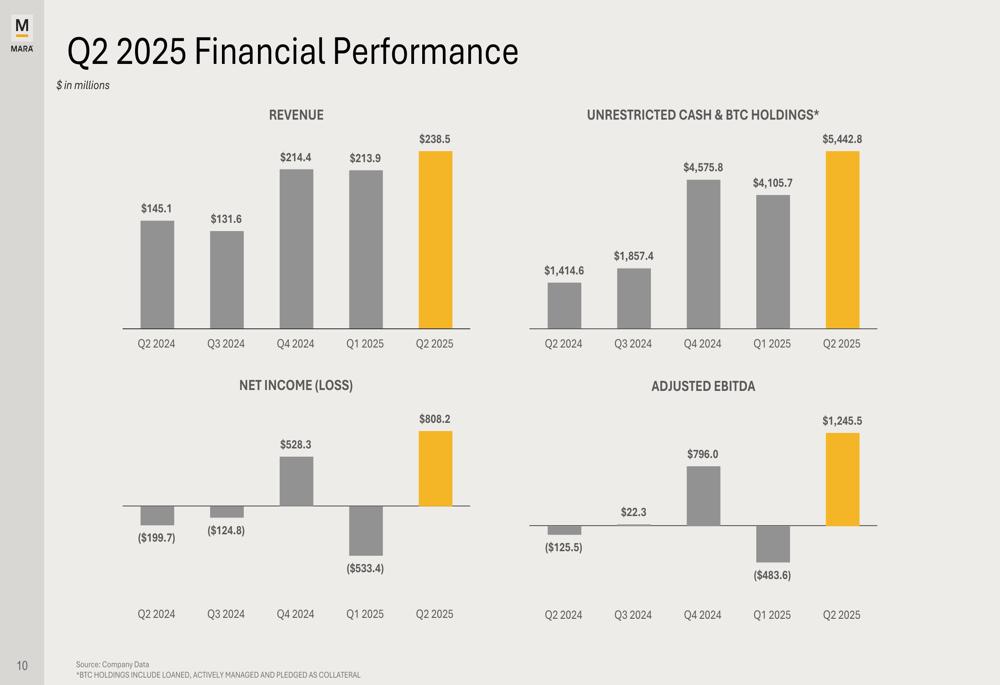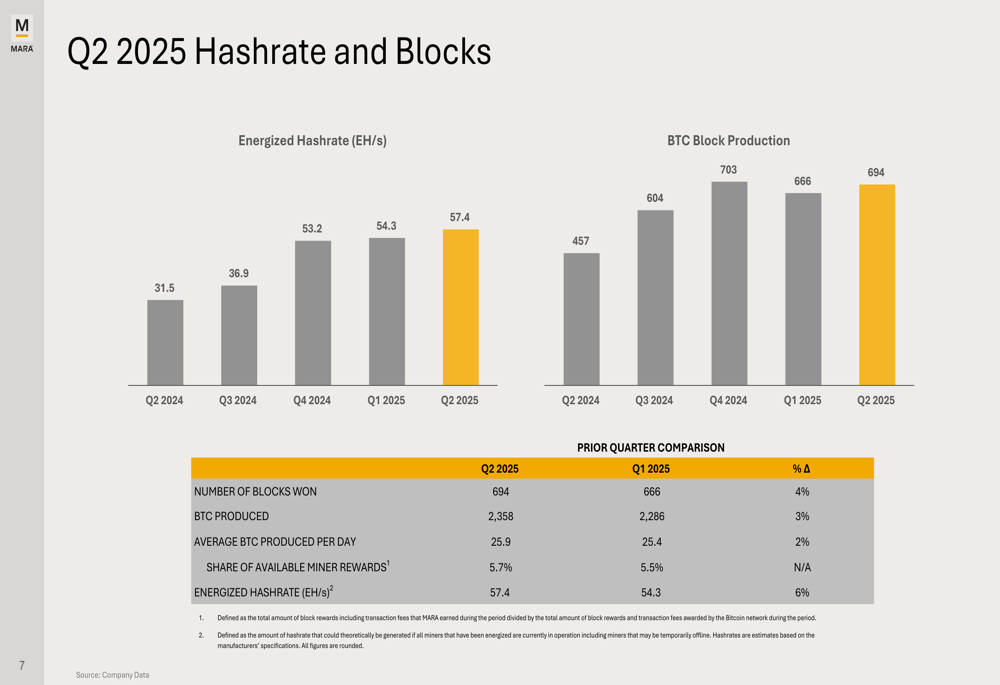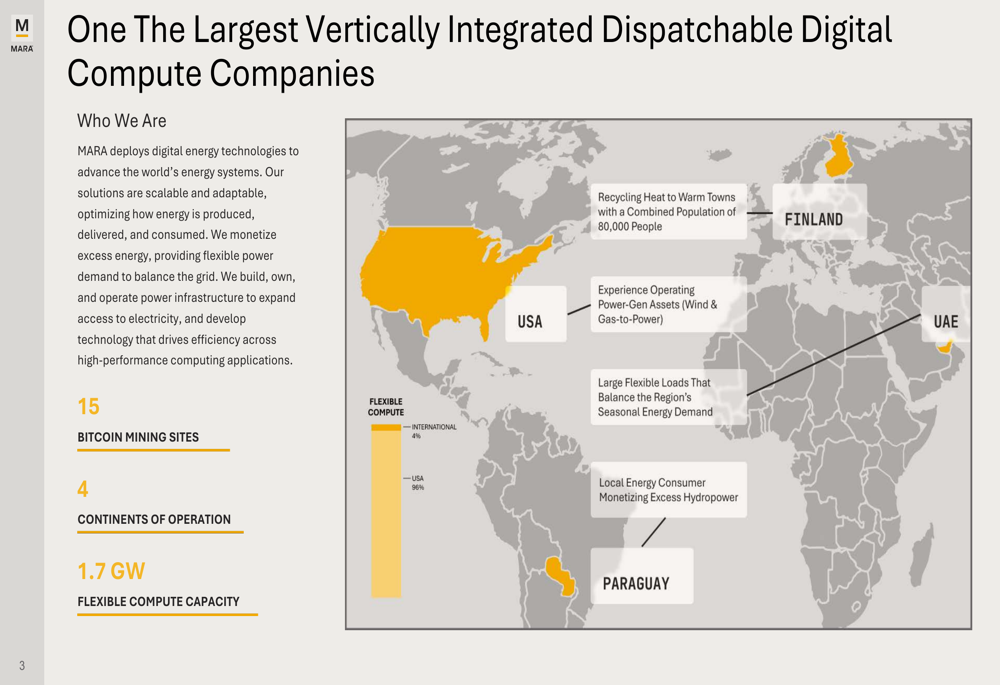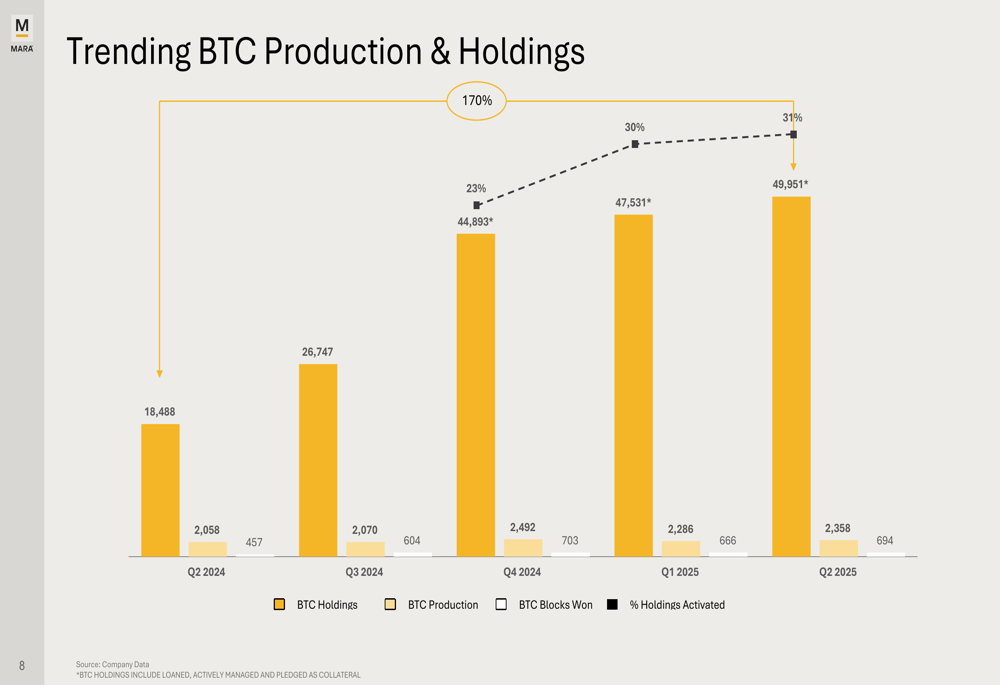These are top 10 stocks traded on the Robinhood UK platform in July
Introduction & Market Context
Marathon Digital Holdings Inc (NASDAQ:MARA) presented its second quarter 2025 results on July 29, showcasing a dramatic financial turnaround from the previous quarter’s losses. The Bitcoin mining company reported significant year-over-year growth across all key metrics, with particular emphasis on its expanding operational capacity and strategic partnerships.
The presentation comes after a challenging first quarter where Marathon missed earnings expectations with a loss of $1.55 per share. The stock has shown significant volatility in 2025, with a current price of $17.16, down 3% in the most recent trading session, reflecting investor caution despite the improved quarterly results.
Quarterly Performance Highlights
Marathon reported a substantial improvement in its financial performance for Q2 2025, with revenue increasing 64% year-over-year to $238.5 million. Most notably, the company achieved net income of $808.2 million ($1.84 per share), a remarkable turnaround from the $199.7 million loss in the same period last year and the $533.4 million loss reported just one quarter ago.
As shown in the following chart of quarterly financial performance:

Adjusted EBITDA reached an all-time quarterly high of $1.2 billion, representing a staggering 1,093% increase year-over-year. This dramatic improvement follows the negative $483.6 million Adjusted EBITDA reported in Q1 2025, highlighting the volatile nature of the cryptocurrency mining business.
The company’s operational metrics also showed significant growth, with Bitcoin production increasing 15% year-over-year to 2,358 BTC and blocks won increasing 52% to 694. Marathon’s energized hashrate grew 82% year-over-year to 57.4 EH/s.
The following chart illustrates the company’s hashrate growth and block production:

Strategic Initiatives
Marathon is positioning itself as more than just a Bitcoin mining company, describing itself as a "vertically integrated dispatchable digital compute company" with operations across four continents. The company has been expanding its owned power generation capabilities, transitioning from 0% to 70% owned and operated sites.
As illustrated in this global operations map:

The company highlighted several strategic partnerships formed during the quarter, including collaborations with Two Prime for Bitcoin yield strategies, TAE for load management systems, and Pado for power load balancing. These partnerships appear designed to optimize Marathon’s energy usage and enhance returns on its Bitcoin holdings.
Marathon is also putting its substantial Bitcoin holdings to work. As of June 30, 2025, the company had activated approximately 31% of its Bitcoin holdings (15,550 BTC) through lending, structured trading arrangements, and as collateral for financing.
The following chart shows the breakdown of the company’s Bitcoin holdings:

Detailed Financial Analysis
Marathon’s financial position strengthened considerably during Q2 2025, with cash and Bitcoin holdings reaching approximately $5.4 billion by the end of the quarter. The company also raised an additional $950 million subsequently through the issuance of convertible notes in July 2025.
The company’s fleet efficiency improved by 26% year-over-year, from 24.8 J/TH in Q2 2024 to 18.3 J/TH in Q2 2025. This improvement in operational efficiency is reflected in the cost per petahash, which declined by 24% year-over-year.
As shown in the following efficiency metrics:

Marathon’s balance sheet remains strong, with total assets of $7.7 billion as of Q2 2025, compared to $6.8 billion at the end of 2024. The company’s digital assets (primarily Bitcoin) accounted for $3.7 billion of these assets, up from $3.2 billion at the end of 2024.
Forward-Looking Statements
Marathon’s presentation emphasized its continued expansion of mining capacity and vertical integration through owned power generation. The company highlighted its 114 MW of owned wind power in Hansford County, Texas, and noted it has an additional 240 MW of interconnect capacity for future growth.
The company’s "Bitcoin to Work" strategy suggests Marathon will continue to activate more of its Bitcoin holdings to generate incremental income, potentially increasing the percentage beyond the current 31% of holdings.
While the presentation focused on positive developments, it’s worth noting that Marathon faces ongoing challenges including Bitcoin price volatility, regulatory uncertainty, and managing the substantial operational costs associated with mining operations. The dramatic swing from a significant loss in Q1 2025 to substantial profits in Q2 2025 underscores the volatile nature of the business.
Marathon’s ability to maintain profitability will likely depend on both Bitcoin price performance and the company’s success in further improving operational efficiency while executing on its strategic initiatives in energy management and Bitcoin yield optimization.
Full presentation:
This article was generated with the support of AI and reviewed by an editor. For more information see our T&C.
